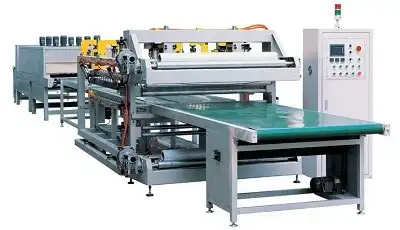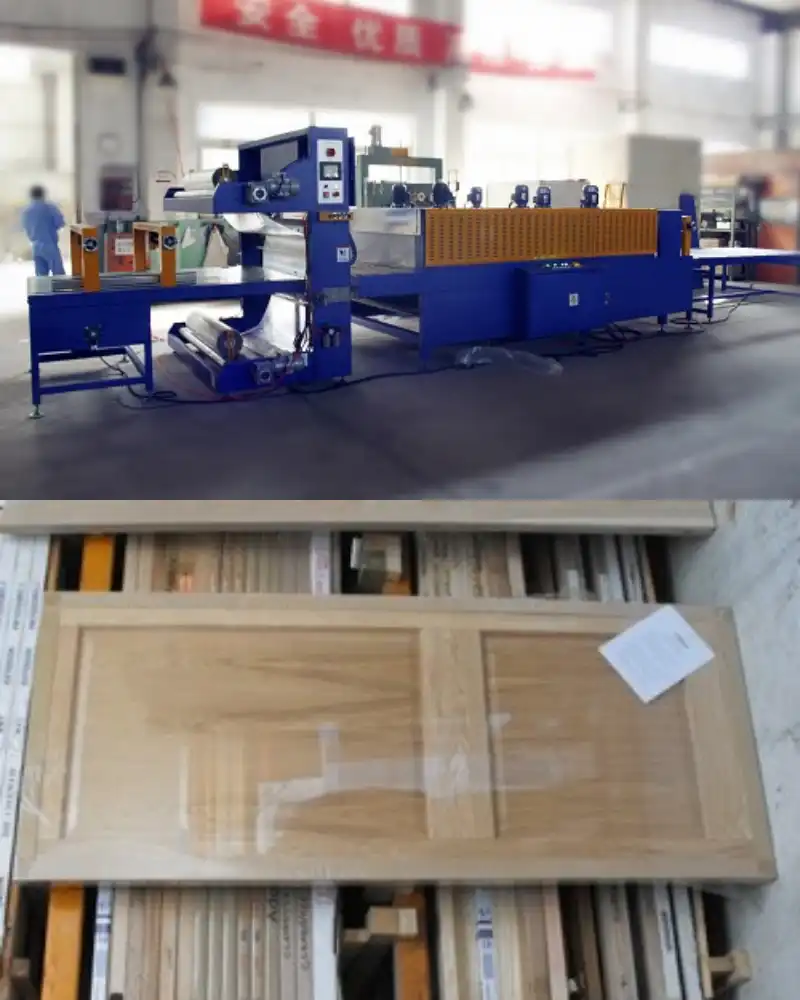A Fabricator's Guide to Door Wrapping Machines for Enhanced Protection and Efficiency
Doors, whether freshly manufactured or awaiting installation, are susceptible to damage during handling, storage, and transportation. Scratches, moisture intrusion, and dust accumulation can compromise quality and lead to costly rework or replacements. Door wrapping machines, particularly automated stretch wrapping systems, offer a robust solution for protecting these essential building components. This guide explores the function, benefits, and key considerations of using these machines in a fabrication or distribution environment.
Understanding Door Wrapping Technology
A door wrapping machine typically utilizes stretch film to tightly encase doors, providing a protective barrier against environmental factors and handling mishaps. Many systems employ an orbital wrapping process, where the film dispenser rotates around the stationary or slowly conveyed door, ensuring complete coverage even for varying shapes and sizes.

Key Benefits for Fabricators and Distributors
Integrating a dedicated door wrapping machine into your workflow offers several operational advantages:
- Enhanced Product Protection: Tightly applied stretch film shields doors from dust, dirt, moisture, and minor impacts, preserving the finish and structural integrity from the production line to the final destination. This is crucial for maintaining quality standards and reducing customer complaints or returns.
- Improved Operational Efficiency: Automated and semi-automated systems significantly reduce the manual labor required for wrapping. Features like automatic film cutting and clamping, coupled with optimized wrapping cycles, allow for higher throughput compared to manual wrapping methods. This frees up personnel for other value-added tasks.
- Consistent Packaging Quality: Machines apply film with consistent tension and overlap, ensuring uniform protection for every door. This standardization eliminates the variability inherent in manual wrapping, leading to more reliable load containment and protection.
- Material Savings: Modern stretch wrappers often incorporate powered pre-stretch systems. These systems stretch the film before application (often by 200-300%), maximizing film yield and reducing the amount of material consumed per door, leading to significant cost savings and reduced environmental impact.
- Versatility: These machines can often be adjusted to accommodate a range of door dimensions (height, width, thickness) and types (wood, metal, composite, pre-hung units). Programmable wrap patterns allow customization based on specific protection needs.

door packing machine Essential Machine Features and Considerations
When evaluating door wrapping machines, consider these aspects:
Automation Level: Choose between semi-automatic (requiring operator initiation and film attachment/cutting) and fully automatic systems (integrating into conveyor lines for operator-free wrapping). The choice depends on throughput requirements and existing workflow.
Wrapping Mechanism: Orbital wrappers are common for doors, providing full coverage. Ensure the ring size and wrapping speed meet your production needs.
Film Delivery System: Look for reliable powered pre-stretch capabilities to optimize film usage and ensure secure wrapping. Adjustable tension control is also vital.
Conveyor System (if applicable): For inline operations, ensure conveyor compatibility, speed synchronization, and appropriate roller types (e.g., non-marking for finished doors).
Control Interface: User-friendly controls (like touch screens) with programmable wrap parameters simplify operation and allow for quick adjustments.
Safety Features: Ensure the machine complies with relevant safety standards, including emergency stops, safety guarding, and sensors. (Referencing resources like OSHA or industry-specific guidelines is recommended).

door shrinking machine with motion sealer Optimizing the Wrapping Process
Film Selection: Choose a high-quality stretch film appropriate for the machine's pre-stretch level and the required load containment and puncture resistance.
Maintenance: Implement a regular maintenance schedule as per the manufacturer's recommendations to ensure consistent performance and longevity.
Operator Training: Ensure operators are properly trained on machine operation, safety procedures, and basic troubleshooting.
Conclusion
Implementing a door wrapping machine is a strategic step towards improving product quality, operational efficiency, and packaging consistency in any facility handling doors. By carefully selecting a machine suited to specific production volumes and door types, and by adhering to best practices in operation and maintenance, fabricators and distributors can effectively protect their products throughout the supply chain, ensuring they arrive at their destination in optimal condition.

